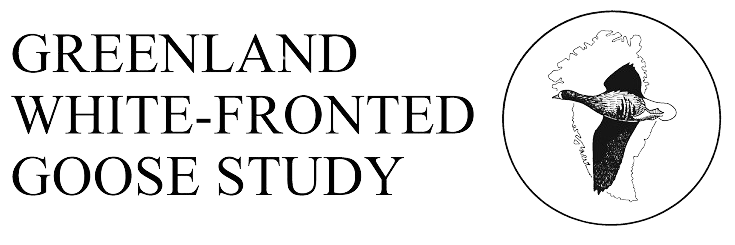History
As described for the previous site, Berry (1939) mentions White-fronted Geese n Jura and A-W (1963) recorded the species as occurring annually, numbering 20-30 individuals. R&O (1979) considered this group of up to as an “offshoot from the main haunt of Islay close by” and in referring to this flock, they could be correct. Numbers do seem to fluctuate considerably and there is some good grounds for believing that this group of birds was a newly established group that started using the very tip of Jura in 1980/1, perhaps by birds moving from Islay. Unfortunately, counts of these birds have not been regular, most often, any birds using this area have been counted from Islay as part of the normal goose monitoring there, only rarely have these birds been counted separately. Unfortunately this has made it impossible to analyse the change in abundance in numbers using these feeding areas or to say very much about their status and distribution. We do not have regular counts from this flock to present here.
Status
Regional importance. Local information indicates that the flock became established in the winter of 1980/81 with about half a dozen birds over-wintering, there being about twice that number the following winter. Since then, numbers have consolidated and increased progressively, so most often there have been 40-70 birds using the area in winter.
Breeding success: Assessment of breeding success has not been regular enough on Jura to provide a run of data from the island.
Feeding sites and habitat: This flock feeds upon permanent pasture and undersown stubble adjacent to the south and east of Loch a’Chnuic Bhric (NR4473). Two improved pastures near the loch are isolated and totally surrounded by heather and Molinia dominated moorland, with few alternative feeding sites nearby. Birds seen feeding at Keills on Islay have been watched flying to this area, confirming the link between the two resorts, but also suggesting that this flock also feeds on pasture on the larger island. This movement seems to have become more common as the flock has grown in numbers.
Roosting sites: This flock use Loch a’Chnuic Bhric (NR4473) as a daytime feeding area and disturbance refuge as well as a night-time roost, probably along the southern shore. Birds seen feeding on stubble at Kiells on Islay have been seen flying to roost in the direction of Loch a’Chnuic Bhric in November, which may suggest that this flock on Islay splits between this roost site and others on the east side of the larger island. Suitable looking roosting areas in Gleann Astaile (NR490715, southeast of the loch) contained no evidence of droppings or feeding when searched in April 1983. When disturbed, geese fly initially to the loch, but may indulge in extended flying over the Sound of Islay and may settle on the larger island to feed.
Habitat change: None known to affect the geese.
Aircraft disturbance: Low flying jets fly north-east up the coast of Jura and this has flushed the geese in the past
Hunting disturbance: Unlikely.
Agricultural disturbance: Minimal, the area is uninhabited, the only occasional disturbance is from the crofter/keeper at Inver Cottage.
Site safeguard: None.
SNH Natural Heritage Zones/Area: Argyll West and Islands.
Linkages with other sites: D0S was a Wexford ringed goose caught as a first winter female in 1994/5. She was seen on Islay in the next winter, frequenting the Craigens, Coullabus and Corsapol parts of the island, but was once seen at Eorrabus that year. In winter 1996/7, she was seen at Cnoc Breac on Jura amongst this flock, but alas was not seen on Islay that year to cement the use of specific fields on the larger island to use by birds from this little flock.
